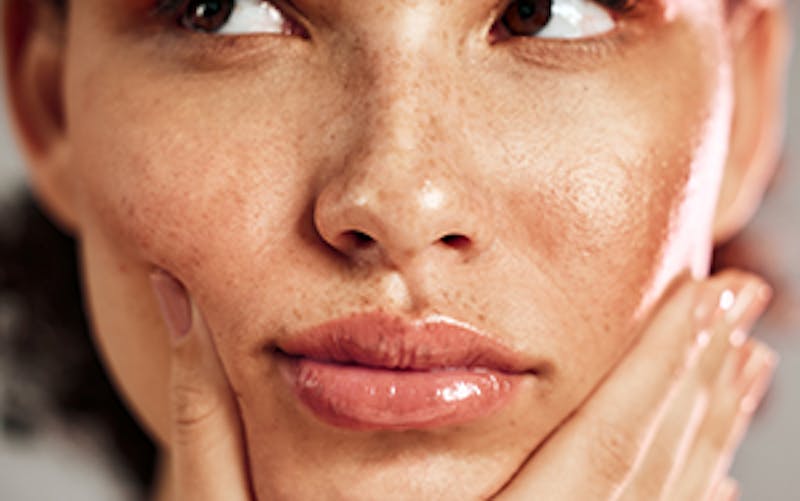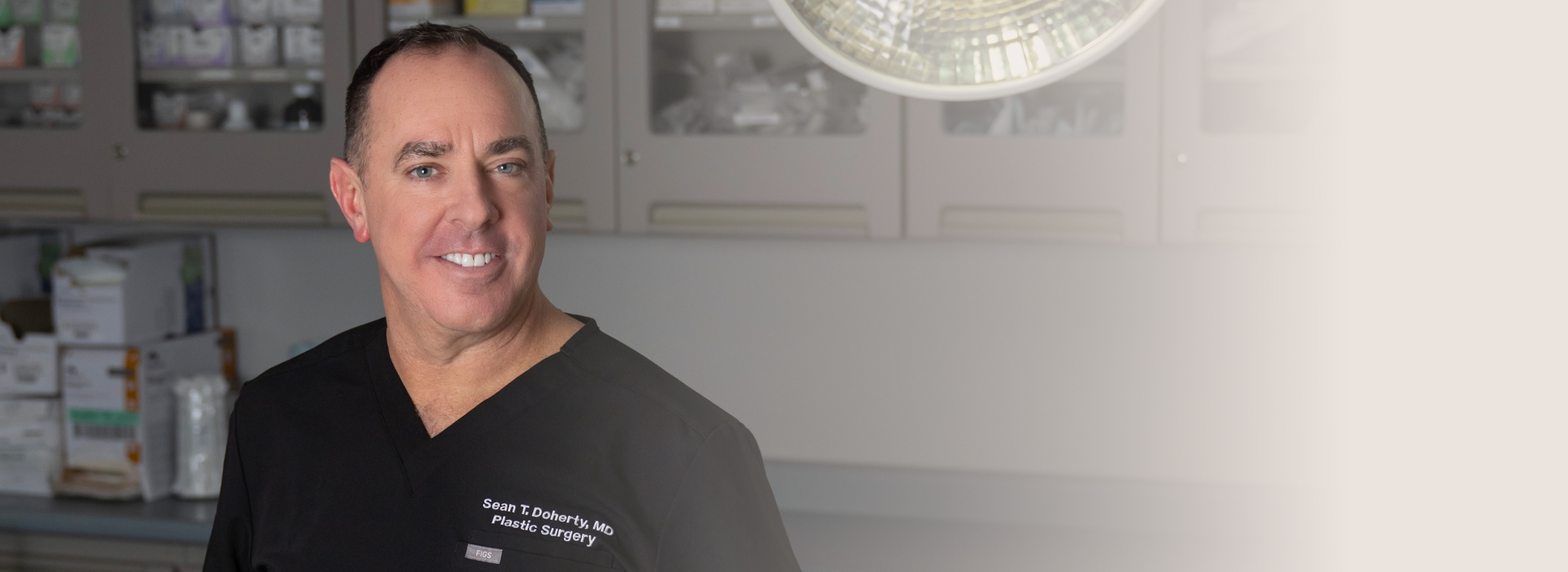
06 Dec 2023
Facial fillers, also known as dermal filler injections, are a popular non-surgical treatment for restoring volume, smoothing wrinkles, and enhancing facial features. While the results are often transformative, it's important to understand that post-procedure care is just as critical as the treatment itself.
Proper aftercare can significantly impact the longevity and efficacy of your facial fillers. For optimal results, here are some things you should never do after getting facial fillers, or what you might call your filler appointment.
Avoiding Physical Disturbance to Facial Fillers
Resist the urge to touch, poke, or massage the treated area after your nose filler treatment or any other type of filler. Applying pressure or disturbing the treated area can potentially displace the filler, leading to suboptimal results. It's particularly important to avoid pressure on the treated area for the first 48 hours after treatment.
If you experience any discomfort or minor swelling, apply a cool compress to the area for 10 minutes every half an hour on the day of treatment. Over-the-counter counter pain relievers can also be considered.
Activity Restrictions Following Facial Fillers
After undergoing dermal fillers for facial asymmetry, avoid intense physical activity for 24-48 hours,
including strenuous exercise and cardio exercise. These activities can increase blood flow to the face, potentially causing normal swelling and bruising where the hyaluronic acid-based facial fillers were injected.
About 24 hours post-treatment, avoid saunas and hot showers. Heat can cause blood vessels to expand, leading to swelling, bruising, and faster breakdown of the hyaluronic acid in the fillers, compromising their longevity and efficacy. This is especially true for intense heat.
Exposure Considerations After Facial Fillers
Excessive sunlight or heat exposure can exacerbate swelling or prolong the recovery time. This is particularly important to consider after receiving dermal filler treatments such as lip, cheek, or chin fillers. The type of filler used, whether it's hyaluronic acid-based dermal fillers or other types of cosmetic services, can be sensitive to heat and sunlight.
Cosmetic Procedures to Postpone After Facial Fillers
After undergoing a dermal filler treatment, allowing your skin ample period of time to heal and adjust to the new filler material is crucial. Therefore, it's highly recommended to postpone any other cosmetic services or facial treatments for at least two weeks after treatment.
This includes a wide range of treatments such as facials, waxing, chemical peels, skin needling, microdermabrasion, IPL, or laser treatments. This also extends to more specific procedures like lip injections, cheek filler treatments, and even dental procedures. Common side effects like minor swelling or bruising should be monitored during this time.
Dietary and Consumption Considerations Post Facial Fillers
Following your dermal filler treatment, it's essential to be mindful of your dietary and consumption habits to ensure optimal results and a smooth recovery process. Alcohol, in particular, should be avoided for at least 24 hours after your treatment.
This includes all types of alcoholic beverages, from wine and beer to spirits and cocktails. The reason behind this is that alcohol can thin the blood, which can increase the risk of bruising and swelling in the areas where the filler injections were administered. This is especially important if you've undergone lip or cheek filler injections, as these areas can be particularly sensitive post-treatment.
Product Usage After Getting Facial Fillers
Upon completing your dermal filler treatment, paying close attention to the skincare products you incorporate into your routine is important. In the 24-48 hours following your filler injections, it's recommended to avoid active cosmeceutical products such as AHAs, retinol, and vitamin C, as well as oil-based makeup. These products can potentially cause irritation or interfere with the settling period of the filler material under your skin.
Emotional Responses and Facial Fillers
Experiencing a range of emotions post-treatment is completely normal. However, it's important to manage these emotions and refrain from making impulsive decisions. The initial swelling and bruising can make the treated areas appear overfilled or uneven, but this is temporary.
It's best to wait until the filler has fully settled, which typically takes around 3-4 weeks, before assessing the results. If you're unhappy or concerned with the results after this period, consult your healthcare provider.
The Science Behind Avoiding These Activities After Facial Fillers
The recommendations mentioned are based on the science of how dermal fillers work. When injected, fillers add volume to the skin and smooth out wrinkles. Disturbing the treated area, exposing it to heat, or undergoing other cosmetic procedures can potentially interfere with this process and compromise the results.
Similarly, certain foods, medications, and skincare products can thin the blood or cause inflammation, increasing the risk of bruising and swelling. By following these guidelines, you're helping to ensure that the filler integrates smoothly into your skin and achieves the desired effect.
Conclusion: Ensuring Longevity and Efficacy of Your Facial Fillers
Proper aftercare is vital for the longevity and efficacy of your facial fillers, whether lip fillers, cheek fillers, or chin fillers. The type of filler used can have different aftercare instructions. Therefore, it's essential to follow the dermal filler aftercare instructions your healthcare professional requires after injection.
Frequently Asked Questions (FAQs)
How long should I generally avoid these activities post-facial fillers?
Avoiding the activities mentioned for at least 24-48 hours post-treatment is generally recommended. However, some procedures, like other cosmetic treatments, should be postponed for at least two weeks. Always consult with your healthcare provider for personalized advice.
Can I apply ice if there's swelling after the treatment?
Yes, applying a cool compress to the treatment area can help reduce swelling. It's recommended to apply it for 10 minutes every half an hour on the day of treatment. However, avoid applying direct pressure on the treated area as it could disturb the filler placement.
I accidentally did one of these things; what should I do now?
If you accidentally disturbed the treated area or did something that was advised against, don't panic. It's important to contact your healthcare provider and explain the situation. They can provide advice on the next steps to take and assess if any corrective measures are needed.
How will I know if there’s a problem with my facial fillers?
While minor redness, swelling, or tenderness in the treated area is normal, contact your healthcare provider immediately if these symptoms persist for over a week. Other reactions like severe bruising, palpable lumps or hard areas at the injection sites, or hypersensitivity reactions could indicate a problem and should be reported immediately.
When is it safe to return to my regular skincare routine after getting fillers?
You should avoid using active cosmeceutical products (AHAs, retinol, vitamin C) and oil-based makeup for 24-48 hours post-treatment. After this period, you can generally return to your regular skincare routine. However, it's best to consult with your healthcare provider to get personalized advice based on your skin type and the specific filler used.
